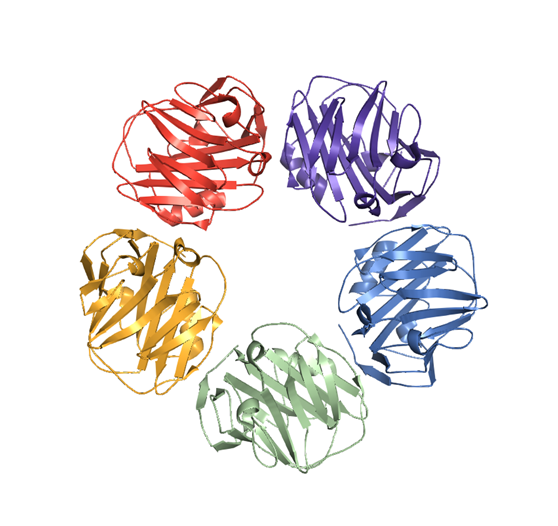Substantial part of the immune response protecting host from the foreign protein is directed by T cells and their receptors.
Two core functions of T cell surface signaling complex includes the 1) identification of friend or foe and the 2) Intracellular signal transduction based on that information. Here, T-cell receptor (TCR) takes the identification part and a series of CD3 proteins does the intracellular activation part. The physiochemical space defined between the T cell and the target cell is called an Immunological synapse.
Signals maintaining the immunological synapse could be classified into two categories: TCR-CD3 complex (Signal I) and co-stimulatory molecules (Signal II). B7 family proteins such as CD28 and part of TNF family proteins belong to Signal II. Typically, Signal II proteins are induced by pre-existing signal I, promoting the T cell activity.
Such a step-by-step activation mechanism helps immune system to precisely control the immune response against foreign proteins. It’s like safeguard mechanism preventing the host from uncontrolled immune activation and subsequent systemic damage.
Immune checkpoint proteins such as PD-1, PD-L1, and CTLA-4 are another example of such safeguards. These proteins as well, are induced as a result of Signal I activation, suppress T cell signaling to the proper level at the appropriate moment. Starting from TCR complex signaling, the host immune system is properly maintained through the balance of co-stimulatory and checkpoint blockade signaling, and this process of defending foreign antigen is called cell-mediated immunity. Cell-mediated immunity plays a very important role in tumor prevention by recognizing tumor-specific/associated antigens.
Then how did the cancer escape this defense mechanism, successfully multiply into billions of tumorous cells? The development of cancer immunotherapy starts from this question.
외부 단백질로부터 host를 보호하기 위한 면역반응의 상당 부분은 T 세포가 담당한다.
이를 매개하는 T 세포 표면의 신호복합체는 두 가지의 핵심적인 기능으로 구성된다.
한 가지는 self와 non-self를 구별해내는 기능, 다른 한 가지는 그 정보를 바탕으로 세포를 활성화시키는 기능이다.
이때 표적세포의 peptide-MHC 복합체의 정보를 sensing하여 외부 항원을 구별하는 역할은 T세포 수용체가 담당하며,
일련의 CD3 단백질들은 이를 기반으로 T세포를 활성화시킨다.
이때 정의되는 T 세포와 표적세포 사이의 물리적인 공간을 immunological synapse라고 부른다.
Immunological synapse를 구성하는 신호는 다시 두 가지로 분류할 수 있다.
앞서 T 세포 수용체와 CD3 단백질들이 만들어내는 신호복합체 Signal I과
이를 보조하기 위한 보조단백질들이 만들어내는 신호복합체 Signal II.
B7 family의 CD28과 같은 분자나, TNF family의 4-1BB와 같은 분자들이 Signal II에 포함된다.
통상적으로 Signal II에 해당하는 단백질들은 Signal I 의존적으로 세포 표면에 발현되며,
T 세포의 활성상태를 다음단계로 강화시킨다.
이와 같은 단계적인 활성기전은 침입한 단백질에 대한 면역반응이 정교하게 조절될 수 있도록 돕는다.
host의 면역시스템이 여러 가지 병리적인 상황에서 무분별하게 활성화되어
host에게 손상을 주는 것을 방지하기 위한 일종의 안전장치의 역할을 수행하는 셈이다.
PD-1, PD-L1, CTLA-4와 같은 면역관문 단백질들이 이와 같은 안전장치의 또 다른 예이다.
이들은 host의 과도한 면역활성을 막고 host의 항상성을 유지하려는 목적으로 설계된 단백질들로써,
보조활성 단백질들처럼 Signal I에 의하여 유도되며, 활성화된 T세포의 신호를 적절한 시점에 억제하는 역할을 수행한다.
T세포 복합체에 의하여 시작되는 면역신호를 보조활성 단백질들과 면역관문 단백질들이 좌우에서 밀고 당기며
적절한 수준으로 유지하는 이 과정을 우리는 세포성 면역 – cell mediated immunity - 라고 부른다.
Cell mediated immunity는 암세포에 대한 방어기전,
그 중에서도 암세포 특이적인 항원들을 인지하여 암세포를 제거하는 과정에서 아주 중요한 역할을 담당한다.
그러면 종양 덩어리는 어떻게 이 과정을 피해 수십억개의 세포로 불어나는데 성공했을까?
항암 면역치료전략은 이 고민에서 출발한다.
* 그림 출처 : https://en.wikipedia.org/wiki/Immunological_synapse
'Memo' 카테고리의 다른 글
| Blockbusters (0) | 2022.11.14 |
|---|---|
| History of immune engager (0) | 2022.11.10 |
| Market approach for cancer immunotherapy (0) | 2022.11.10 |
